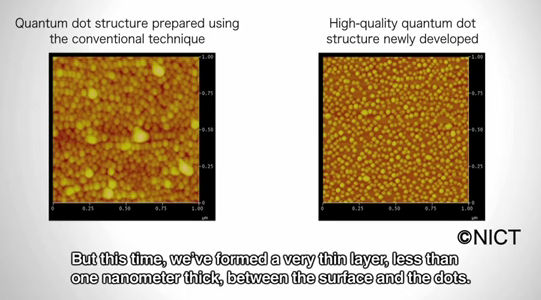A team of researchers at the Photonic Network Research Institute of Japan’s National Institute of Information and Communications Technology (NICT) has developed a new light source technology that might pave the way to some pretty spectacular applications in the future.
The core piece of the technology are “high-quality” quantum dots, tiny nano particles, that boast higher stability and optical frequency than those created the conventional way.
By using the so-called “Sandwiched sub-nano separator structure”, NICT says their quantum dots can be utilized in optical frequency bands that are about 70 Thz wide, which is about seven times wider than the 10Thz of conventional frequency bands currently offer.
NICT also says that because this new wavelength band can permeate human skin, their technology could also be used in bio-imaging, for example to shoot high-resolution photos of new molecules in cells.
NICT explains their light source technology:
Usually when you fabricate quantum dots, you grow crystalline quantum dot particles, in nanometer size, on the semiconductor surface. But this time, we’ve formed a very thin layer, less than one nanometer thick, between the surface and the dots. By adding just this nanometer layer, we’ve be able to form high-quality quantum dots, without aggregation structures, at very high density.
This video, shot by Diginfo TV in Tokyo, provides more insight (in English):


